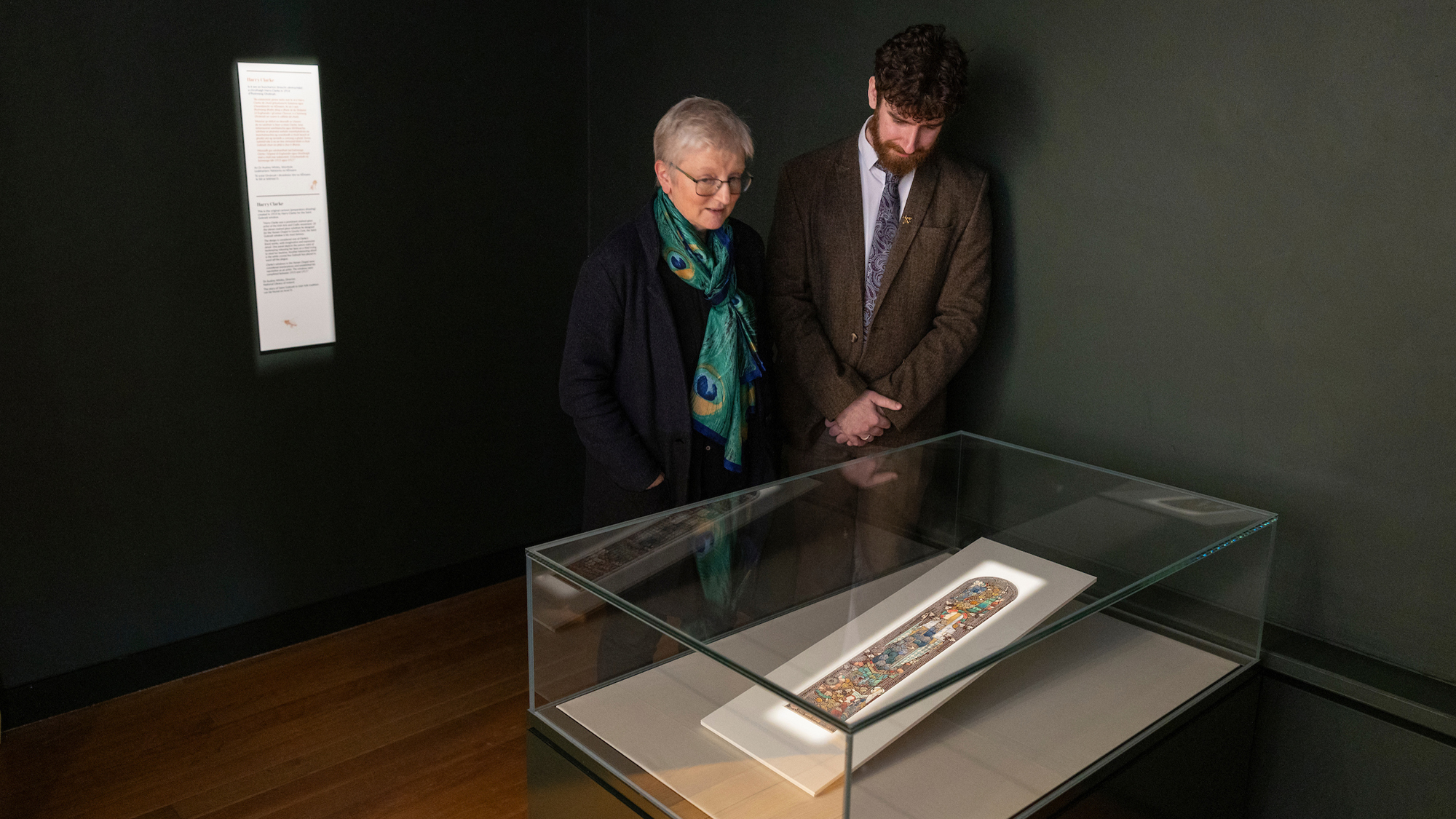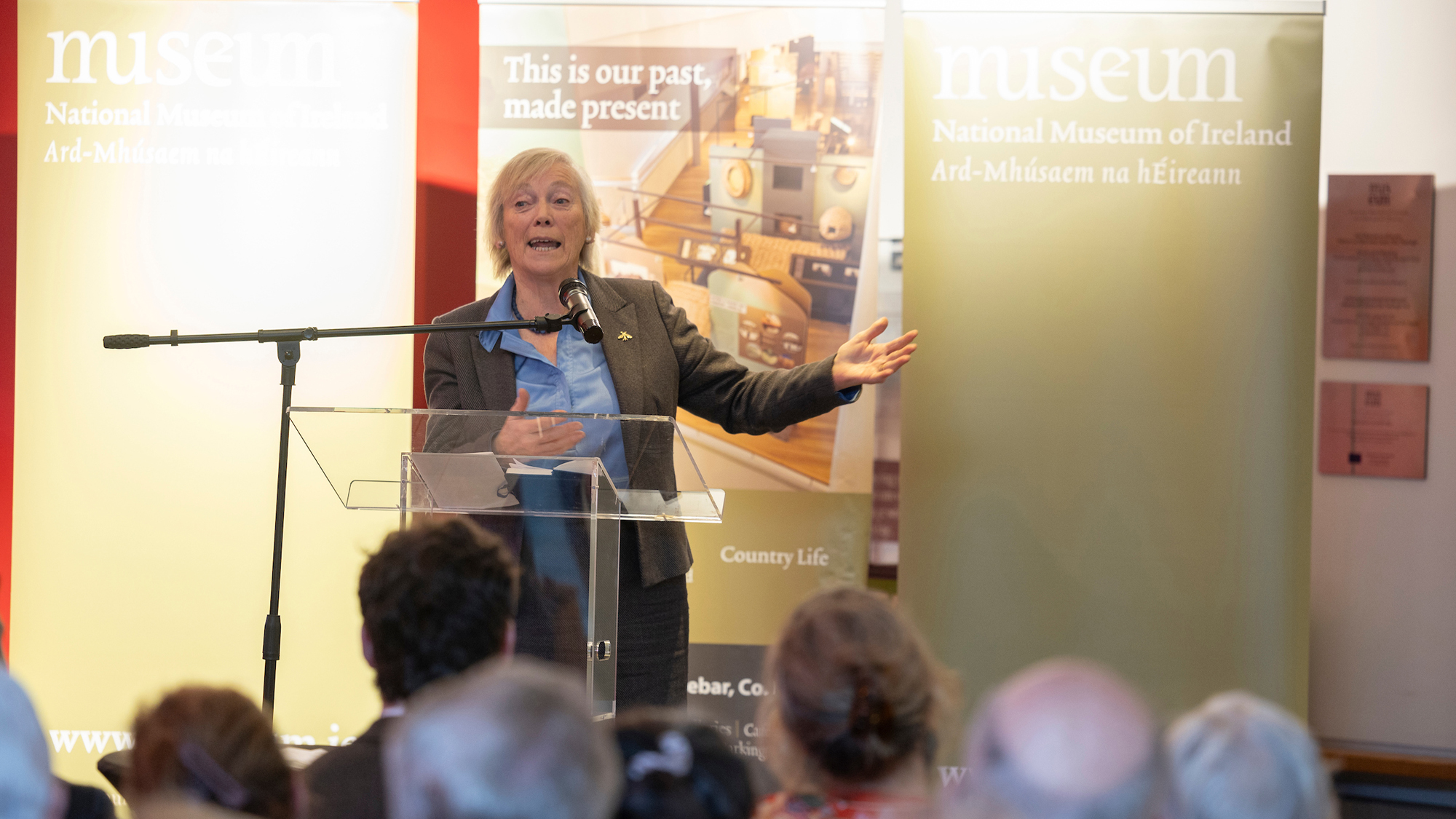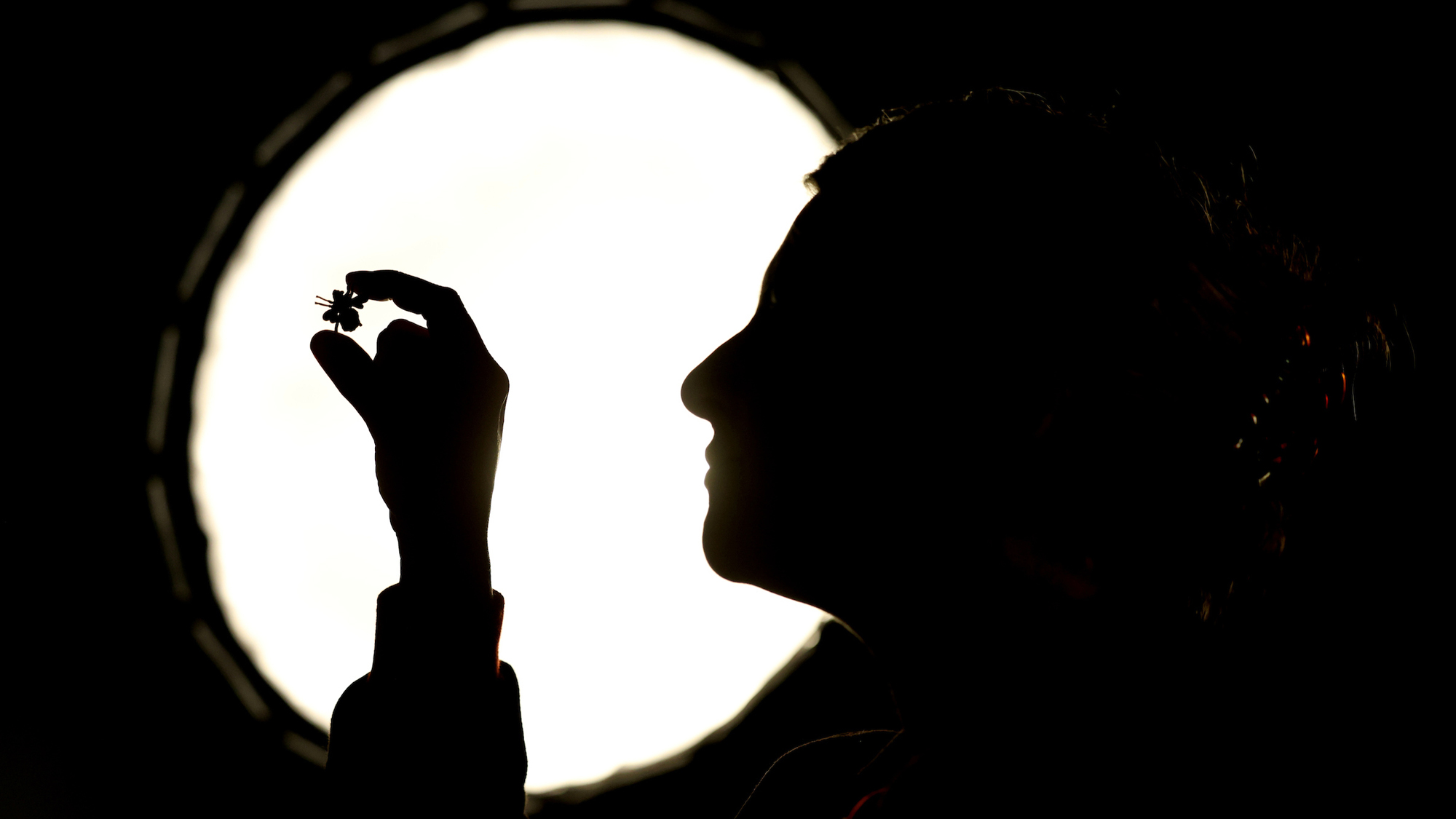A new temporary exhibition exploring the captivating influence of Irish bees on our culture and environment has opened at the National Museum of Ireland - Country Life in Turlough Park, Castlebar, Co. Mayo.
The Murmur of Bees includes objects from the Museum’s Natural History and Irish Folklife collections, dating from the 18th century to the present day.
As we approach Saint Gobnait’s Day this Sunday, 11 February, the exhibition tells the story of why a medieval abbess holds the title of Ireland’s patron saint of bees.

(Pictured is Dr Éimear O'Connor, Director of Collections and Access, NMI, and Tiernan Gaffney, Curator, Irish Folklife Division, NMI, at the drawing of Saint Gobnait by Harry Clarke, on loan from the Corning Museum of Glass, NY, USA. Image: Jason Clarke)
Included in the exhibition is an exquisitely detailed and delicate drawing of Saint Gobnait by renowned Irish artist Harry Clarke, on loan until May 2024 from the Corning Museum of Glass, NY, USA. The artwork was the template for what is one of Harry Clarke’s most celebrated stained-glass windows - depicting Saint Gobnait in the Honan Chapel, Cork City.
Visitors can also read a selection of stories about Saint Gobnait collected by schoolchildren for the Irish Folklore Commission from 1937 to 1939, which provide an intriguing insight into how she was regarded and venerated.
The Natural History material included in the exhibition gives visitors a rare glimpse into the fascinating and unusual world of Irish bees. Examples of every bee species in Ireland are displayed, as well as bees and other insect species from around the world. Visitors will learn about the differences between honeybees, bumblebees, and an astonishing diversity of solitary bees, and might be surprised to realise how many species are found in Ireland.

(Pictured is Dr Éanna Ní Lamhna who performed the official launch of The Murmur of Bees. Image: Jason Clarke)
Beekeeping has been enjoying a resurgence in popularity in recent years and enthusiasts will be interested to
see Instructions for Managing Bees (1733), the first book published on beekeeping in Ireland, on loan from the Royal Irish Academy.
Footage of beekeepers at work in the 1960s, courtesy of RTÉ, will also feature, along with a display of bee skeps – traditional dome shaped beehives made from lengths of straw rope.
Honey jar labels used by today’s beekeepers in Ireland, shared with the Museum on foot of a public invitation, have also been incorporated into the exhibition.
A commissioned diorama of the inside of a hive will provide visitors with a unique insight into the highly organised and structured world inhabited by bees. The life of the industrious honeybee is displayed along-side preserved nests of less-familiar solitary bees, bumblebees and other social insect species.
A miniature version of a Guinness World Record winning Lego beehive, created by Athlone based schoolteacher, Ruairí O’ Leochain during the 2020 lockdown, adds a playful element. Donated in 1997, a wooden beehive made by John Gallagher, from Beeleek, Co. Fermanagh, demonstrates the skill and craftsmanship associated with beekeeping over the centuries.
Visitors to the exhibition can also watch honeybees flying in and out of active hives on the rooftop of NMI – Country Life from a glass apex viewing area that looks out to a heather garden. The Museum hives are tended by local beekeepers.

(Pictured is Lynn Scarff, Director of the National Museum of Ireland, at the launch of The Murmur of Bees. Image: Jason Clarke)
A painting of a Garden Bumblebee (Bombus hortorum) by artist Shevaun Doherty as the cover art for the All-Ireland Pollinator Plan, will also be on display. A series of artist workshops led by Shevaun and other public and educational talks will run in parallel with the exhibition over the next year.
This summer, the celebrated ‘Bee Dress’ by the artist Alice Maher will also join the exhibition.
Welcoming the launch, Director of the National Museum of Ireland, Lynn Scarff, said:
Our Irish Folklife Collection which is based in Turlough Park, Co. Mayo is the perfect home for this exciting exhibition, which takes visitors on a journey of how bees have influenced everyday aspects of Irish life for centuries, playing an important role in biodiversity, but also in inspiring arts, culture and folklore. Developed through a collaboration with colleagues in Natural History and Irish Folklife, the exhibition will provide a very special insight into these insects and the relationship we have had with them in Ireland specifically, going back centuries. The National Museum of Ireland is a major repository for natural science collections and a custodian of our cultural heritage. This exhibition is a demonstration of a key focus in our new Strategic Plan 2023 -2028 ‘Increasing Accessibility, Engaging Community’, which is to mobilise our collections and programmes to engage the public on the challenges of climate change and biodiversity loss.”
Dr Aidan O’Hanlon, Curator of Entomology, NMI - Natural History, said:
This is the first time that a public exhibition focusing solely on insects has ever been developed in Ireland. Bees are incredibly special insects due to their crucial role as pollinators and the astonishing social behaviour seen in some species. Honeybees in particular have had a close relationship with humans for millennia. The many hundreds of specimens and displays that we developed for this exhibition were carefully selected to invite visitors into the extraordinary world of this remarkable insect group.”
Tiernan Gaffney, Curator in the Irish Folklife Collection, NMI - Country Life, said:
Bees hold an interesting role in Irish history, and this exhibition explores how they have influenced our everyday life, traditions, and material culture. As we approach Saint Gobnait’s feast day, this provides a wonderful opportunity to celebrate and learn about the special bond humans have with bees.”
The Murmur of Bees will be on display until summer 2025 and admission is free.
